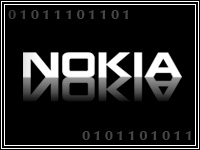
The smartphone market is back in hyper-growth mode, according to the latest IDC Worldwide Quarterly Mobile Phone Tracker, which reported this piece of the mobile market posted a 56.7 percent increase in growth for Q1, shipping a total of 54.7 million units.
That compares to the 21.7 percent growth rate posted by the mobile phone market.
“Smartphones in the U.S. have traditionally been a growth area,” IDC mobile phone analyst William A. Stofega told the E-Commerce Times. “This confirms it is heating up once again.”
The smartphone market grew 38 percent in the fourth quarter, typically the strongest of the year, making the Q1 pace all the more impressive, he added.
Top Five Vendors
All of the vendors have their own success stories, as well as reasons to hope for additional growth in the coming year, Stofega said.
Nokia maintained its position as the leading smartphone vendor worldwide in the first quarter, IDC reported. In second place was Research In Motion. Apple came in third — but its iPhone exhibited strong growth by doubling its shipments from a year ago. Fourth place HTC also posted high double-digit growth. Motorola, after storming back into the smartphone space in the fourth quarter of 2009, was the fifth most popular vendor in Q1.
Nokia has a lot of good products in the pipeline, Stofega said.
“We had a look at the N8 (its first Symbian^3 model) and think it is very compelling. I think we are in for a repeat of the last year,” he said. Nokia introduced several new models last year, including the C3, C6 and the E5.
How RIM’s BlackBerry OS 6.0 will play out in the market “could be a very interesting story,” Stofega added.
HTC is doing well, fueled by its portfolio of Android-powered devices such as the Hero, Droid Eris and MyTouch. With the first WiMax Android phone, the EVO 4G, slated to launch later this year, HTC is well positioned, Stofega said. “HTC definitely has one of the most interesting design teams around.”
A sleeper manufacturer is Motorola, which seems to have escaped its perpetual cloud of bad news. This year the company is planning to launch 20 different models, noted Stofega.
Apple Grabs Share From RIM
Even nestled in the middle of the list, Apple’s stats are garnering a lot of attention. Little wonder, said Azita Arvani, principal of the Arvani Group.
“Apple with its iPhone and now with the iPad is making the modern smartphone and overall mobile device market fiercely competitive,” she told the E-Commerce Times.
RIM was the vendor hurt the most by Apple’s growth, according to IDC. The iPhone took 16.1 percent of the shipments in the quarter — an increase from the 10.9 percent it posted a year ago the same period. RIM, by contrast, dropped to 19.4 percent from 20.9 percent.
In response, other manufacturers are stepping up releases of phones and operating systems, Arvani said.
Both Symbian and RIM, for example, took a very long time to upgrade their software. “When you have a competitor like Apple breathing down your neck, you simply can’t afford to go slow,” commented Arvani.
The IDC stats show that diversification for vendors can pay off, she continued. “HTC is keeping its options open with both Android and Windows Phone operating systems. That is a smart move in the smartphone market for a device maker that does not control the OS.”
More Competition
Competition in the smartphone space will step up — and likely shift again — as Dell’s initiative gets under way and HP revitalizes Palm, Stofega said. These developments, however, will unfold over the longer term.
It will take at least until the end of the year for HP to turn Palm in the right direction, he predicted. It is unclear exactly what Dell’s time frame and plans are, as most of what the market knows is from leaks of its plans to launch several smartphones and tablet-style computers.













































Social Media
See all Social Media